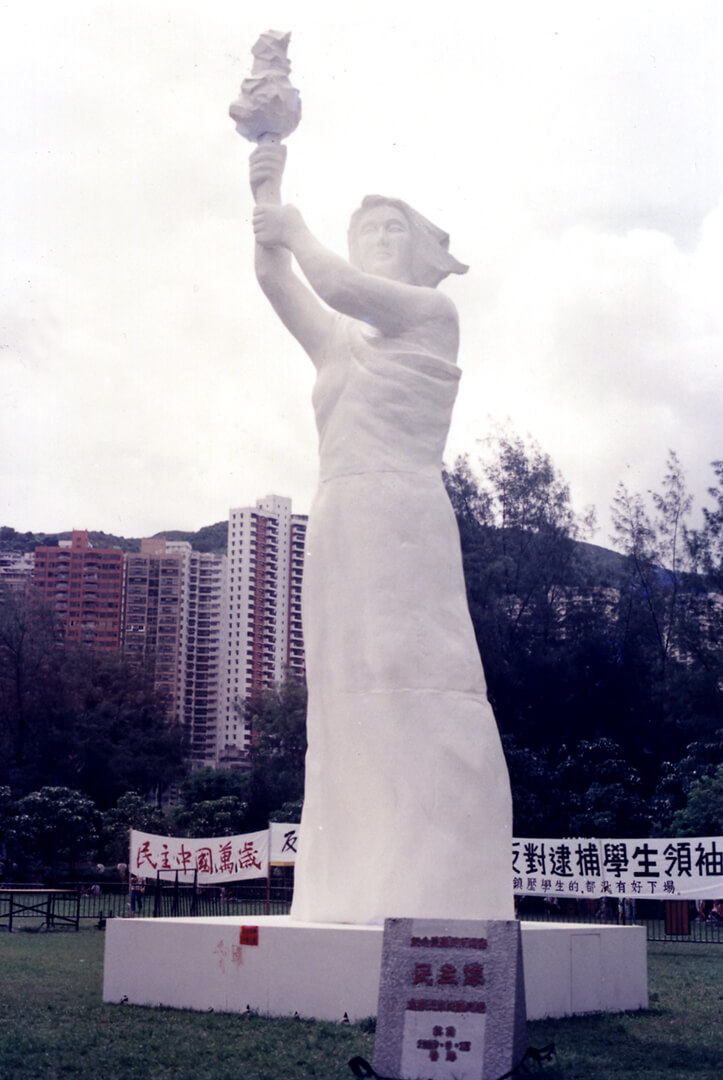The Goddess of Democracy statue, about 10 meters tall, is one of the artistic symbols of the 1989 Beijing student movement. It was designed and created by more than 20 students from the Central Academy of Fine Arts, the Beijing Film Academy, and six other universities.
May 29th, 1989, on the 9th day of martial law in Beijing, as the student movement was at a low ebb and in a state of confusion, thousands of citizens worked together to transport the components of this plaster statue to Tian'anmen Square. With no cranes or other lifting apparatus, using only ropes and cloth bands, they moved the heavy statue inch by inch into position. The Goddess of Democracy statue stood south of Tian'anmen Gate, separated by 300 meters from the portrait of Mao Zedong. They regarded each other, symbolizing the contest between democracy and autocracy.
The day of June 4th, when soldiers cleared Tian'anmen Square in a bloodbath, the Goddess of Democracy was knocked over and smashed by tanks. Like the resistors, the statue, too, was massacred. Although the Goddess of Democracy statue in Tian'anmen Square stood for only a few days before being destroyed, it quickly "returned to life" in many places. June 18th, 1989, local Hong Kong artists and 60 students from the Academy for Performing Arts joined together to create replicas of the Goddess of Democracy and of the Monument to the People's Heroes; in Victoria Park, Hong Kong, they erected the first "Goddess of Democracy". The Hong Kong Alliance in Support of Patriotic Democratic Movements of China held an unveiling ceremony, allowing citizens to view the statue and mourn those who had died on June 4th in Beijing.
